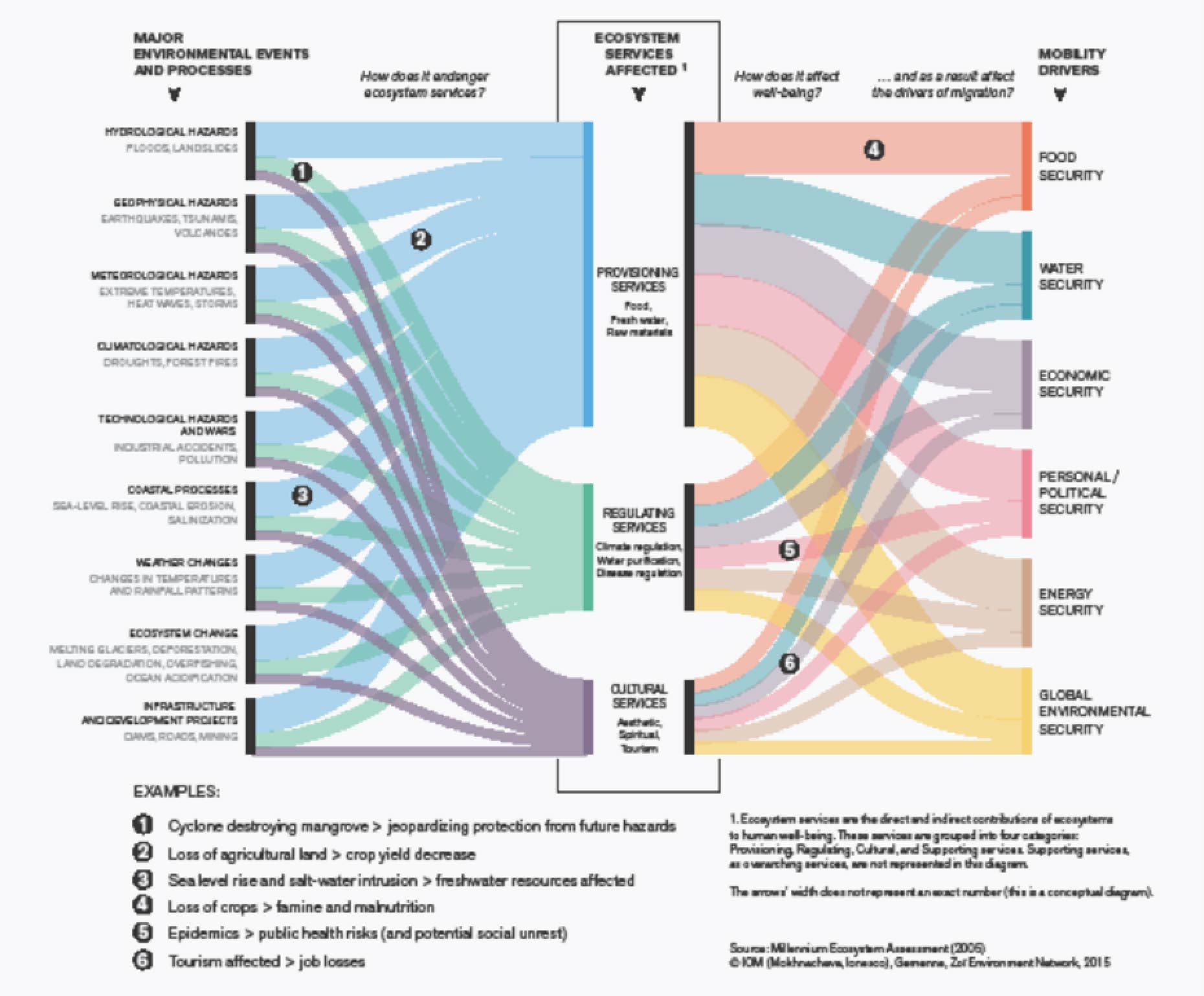Climate Change
Migration and environmental change
Millions of men, women and children around the world move in anticipation or as a response to environmental stress every year. Disruptions such as cyclones, floods and wildfires destroy homes and assets, and contribute to the displacement of people. Slow-onset processes – such as sea-level rise, changes in rainfall patterns and droughts – contribute to pressures on livelihoods, and access to food and water, that can contribute to decisions to move away in search of more tenable living conditions. Advances in meteorological and other sciences which inform about the dynamics and pace of climate change indicate that disruptions ranging from extreme weather events to large scale changes in ecosystems are occurring at a pace and intensity unlike any other known period of time on Earth. Anthropogenic climate change is expected to increasingly affect migration and other forms of people moving to manage these changing risks.
Migration and slow-onset climatic changes
In the last decade, a vast amount of knowledge has been produced on the climate change and migration nexus. A recent meta-analysis of available literature concludes that “slow-onset climatic changes, in particular extremely high temperatures and drying conditions (i.e., extreme precipitation decrease or droughts), are more likely to increase migration than sudden-onset events.” Migrants moving to adapt to slow-onset impacts might have more time to gather the resources needed to migrate, while sudden-onset events reduce the ability to move by rapidly depleting resources.
Key resources on the topic
- Migration and the slow-onset impacts of climate change (WMR 2022, Ch. 9)
- Human mobility and adaptation to environmental change (WMR 2020, Ch. 9)
- IDMC Global Report on Internal Displacement 2021
Environmental change and mobility drivers
Migration in the context of adverse climate impacts is mostly multicausal, as the decision to migrate is often shaped by a combination of different factors, including climate drivers. At the same time, a wide range of environmental and climate factors can influence the decision or necessity to migrate, from sudden-onset disasters such as typhoons and floods, to slow-onset processes like sea-level rise and land degradation. Another intricacy relates to the many forms that migration can take in the context of environmental change, with people moving near or far, internally or across borders, for a limited period of time or permanently.
Links between environmental change, ecosystems and human mobility

Key findings on migration in the context of slow-onset events related to policymaking
Slow-onset events and processes may result in diverse migration outcomes: a continuum of voluntary to involuntary migration; short-term, circular, longer-term and permanent movements; internally or across borders; over short or long distances; migration of individuals, whole households and entire communities (planned relocation); and immobility of trapped populations. The choice to migrate in the context of slow-onset events and processes often involves complex decision-making and is shaped by multiple socioeconomic and environmental factors. Slow-onset processes affect more directly the lives and livelihoods of those who depend on local natural resources for their livelihoods and security (e.g. farmers, herders, fishers and indigenous peoples). Migration in the context of slow-onset impacts can be difficult to distinguish from other types of movements (e.g. labour migration, shorter-term circulation). Communities of origin, migrants’ families left behind and trapped populations are also concerned with migration in the context of slow-onset events. Migration in the context of slow-onset processes often results in differentiated impacts for women, boys and girls, and the elderly, linked to a number of factors such as family separation, disempowerment and increased dependency on other household members. Slow-onset events and processes occur in some contexts with situations of intercommunal tensions and conflict. Their combined impacts can lead to population movements, which in turn further exacerbate environmental degradation and conflicts. Urban areas are often the main destinations for people moving in the context of slow-onset events. However, these urban areas can become hotspots of risk related to the impacts of environmental change.
Reflection questions
What are some major environmental and climate events and processes that drive human mobility?
Describe some mobility drivers that result from environmental change.
In your own words, describe a few implications of migration and climate change for policymaking.